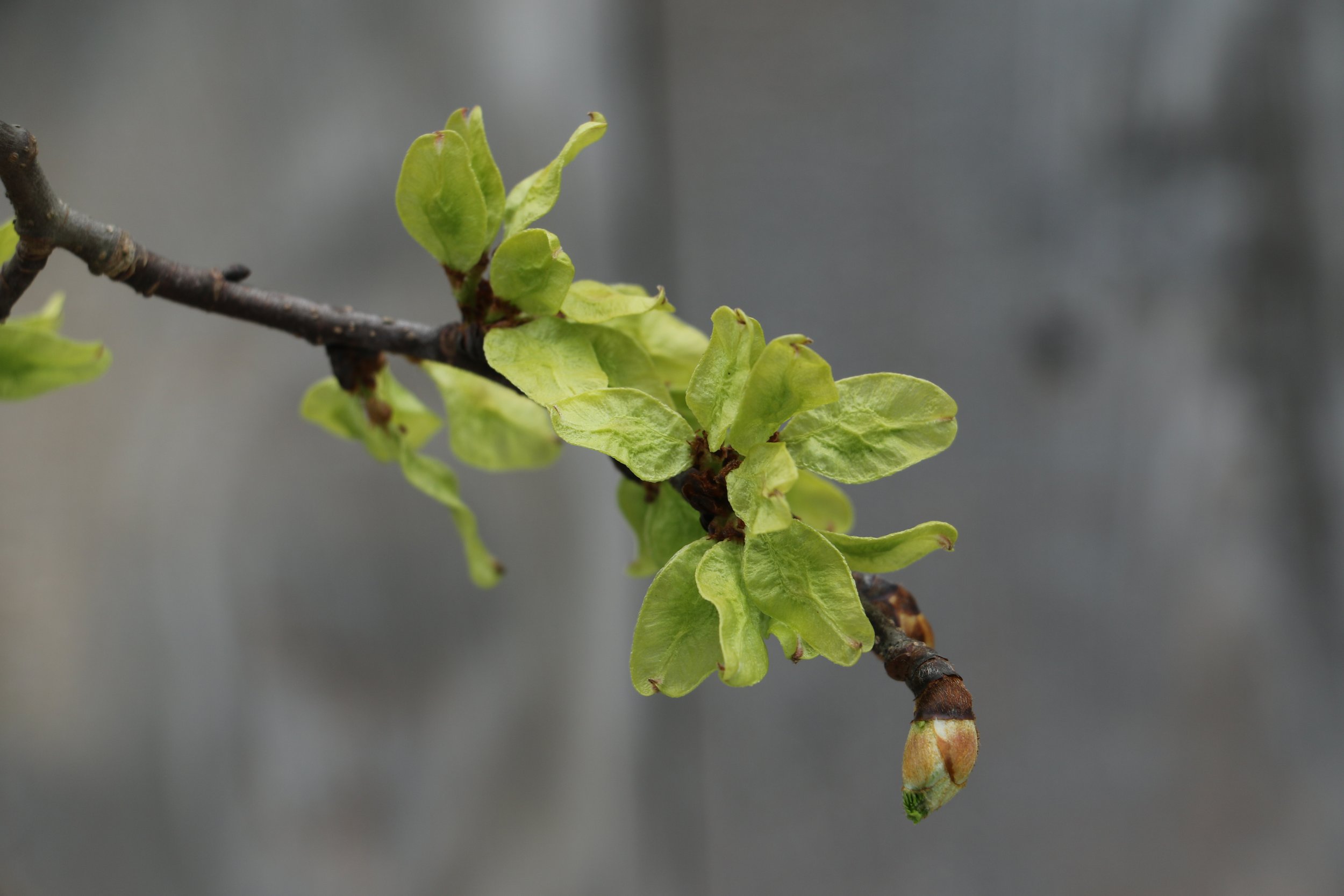The Camperdown Elm: A Contorted Cultivar










Originating from the area of Camperdown House of Dundee Scotland and propagated by head forester David Taylor, the aptly named Camperdown elm (Ulmus glabra ‘Camperdownii’) is noted for its short stature, contorted branches, and weeping habit. The nature of this individual plant was remarkable because the true species of wych or Scotch elm (Ulmus glabra), is known to grow 80 feet tall and 60 feet wide with an upright and spreading rounded crown, much like the one on the southwest corner of the Redwood Library. ‘Camperdownii’, in comparison, typically reaches only 15 feet high though will spread up to 30 feet wide. It should not be confused with the other short statured cultivar ‘Horizontalis’ that has flatter, more layered branching than the smoothly mounding arcs of the ‘Camperdownii’.
While the original tree grows on its own root system in what is now Camperdown Park, the cultivar entered the horticultural scene in the 1840s as a grafted product and continues as such today, making all Camperdown elms genetic clones of that original plant. This includes the eight successful propagules residing at the Heritage Tree Center, whose genetics originate from one of the pair of Camperdown elms at the tip of Eisenhower Park, taken as cuttings, or scions, in 2020 and 2021. The park, while dedicated in 1960 to president Eisenhower, has its origins back to the 17th century when it was part of The Great Common. Whittled down over time to its current shape and size, it is thought that the elms, along with ash, lindens, and willows, were planted in the park by 1850, however the first solid evidence of the Camperdowns’ presence is in a 1895 plat map by Olmsted, Olmsted & Eliot, which lists them as shrubs.
As with the pair of elms at the park, our trees are top grafted, meaning that the placement of the graft union is raised higher on the rootstock. This practice is often used on woody plants with a weeping nature to speed up when the plant would be tall enough to show off their unique umbrella-like appearance, a feature that is present on the many weeping cherry trees that have just finished blooming here in the city. Along with being top grafted, another interesting technique was used on these elms to increase the success rate of the graft itself, a method called hot pipe callusing. This technique utilizes a pipe heated internally with hot air. The graft unions are then held against the heat using, in this case, moist peat, to increase their temperature for a couple of weeks without drying out the rest of the plant or bringing the two plant parts out of dormancy. This is often standard practice to graft dormant trees so that the scion has a chance to create a union with the rootstock without an overactive flow of sap to get in the way of the process.
Another notable aspect of these particular grafts is the type of rootstock used. While the original grafts and many after are placed on rootstock of the straight species of wych elm (Ulmus glabra), ours were placed on zelkova (Zelkova serrata), another tree often seen throughout Newport. While these scion and rootstock do not share a genus, they are of the same family, Ulmaceae, which allows the two to be compatible here. As with most grafted trees, it is important to keep an eye out for sprouts from the rootstock and remove them when they appear to prevent their combined growth and maintain the true nature of the desired graft.
Beside their historical value and striking growth habit, other notable characteristics include their flower buds. While not showy, the buds are a dark almost purple color covered in tiny orange hairs that produce a beautiful bronze color. When flowers emerge and are pollinated, they begin to produce light green seed coverings with slightly notched red tips, all of which grow out into lovely chartreuse fans of wafery fruit, called samaras, that adorn the wych elms and their cultivars this time of year. If you visit these two Camperdown elms in Eisenhower park, that is what you’ll see now, their lovely rounded yet contorted form covered in samaras with leaves beginning to emerge around them. A great testament to their cultivar and history, and a prized pair of trees for the enjoyment of all.
By Morgan Palmer — NTC Plant Production Manager
May 2024
